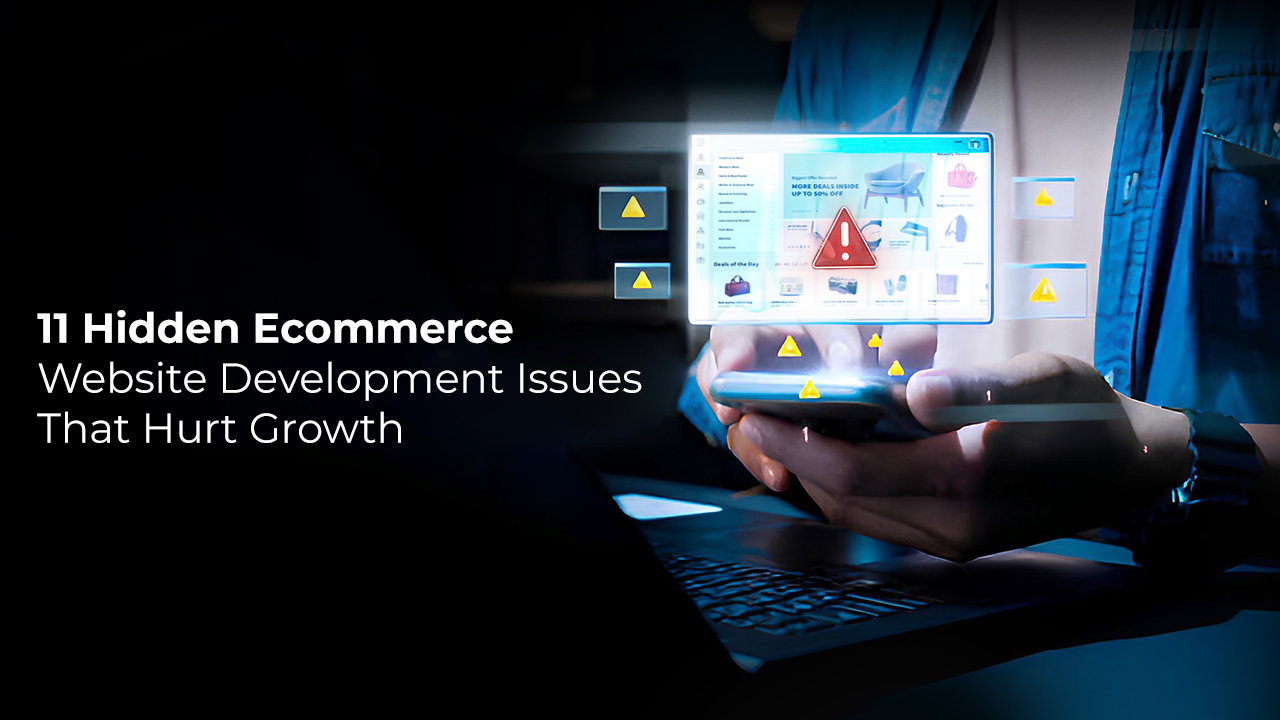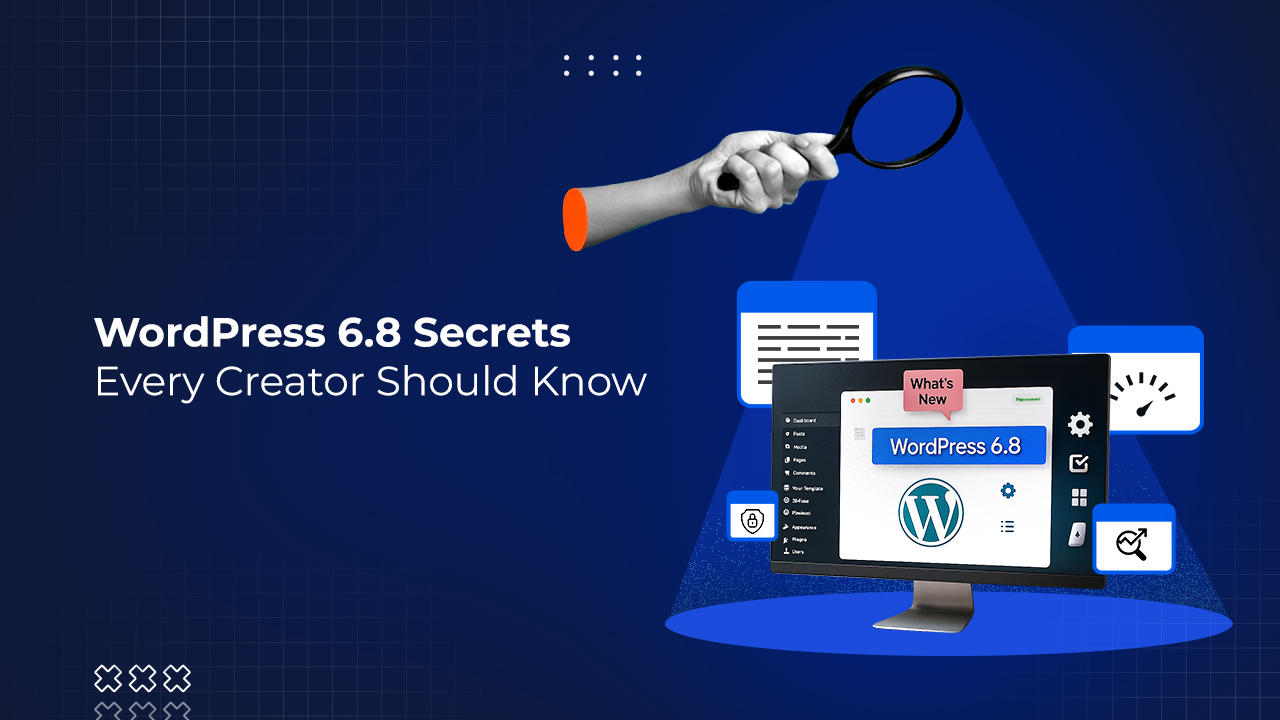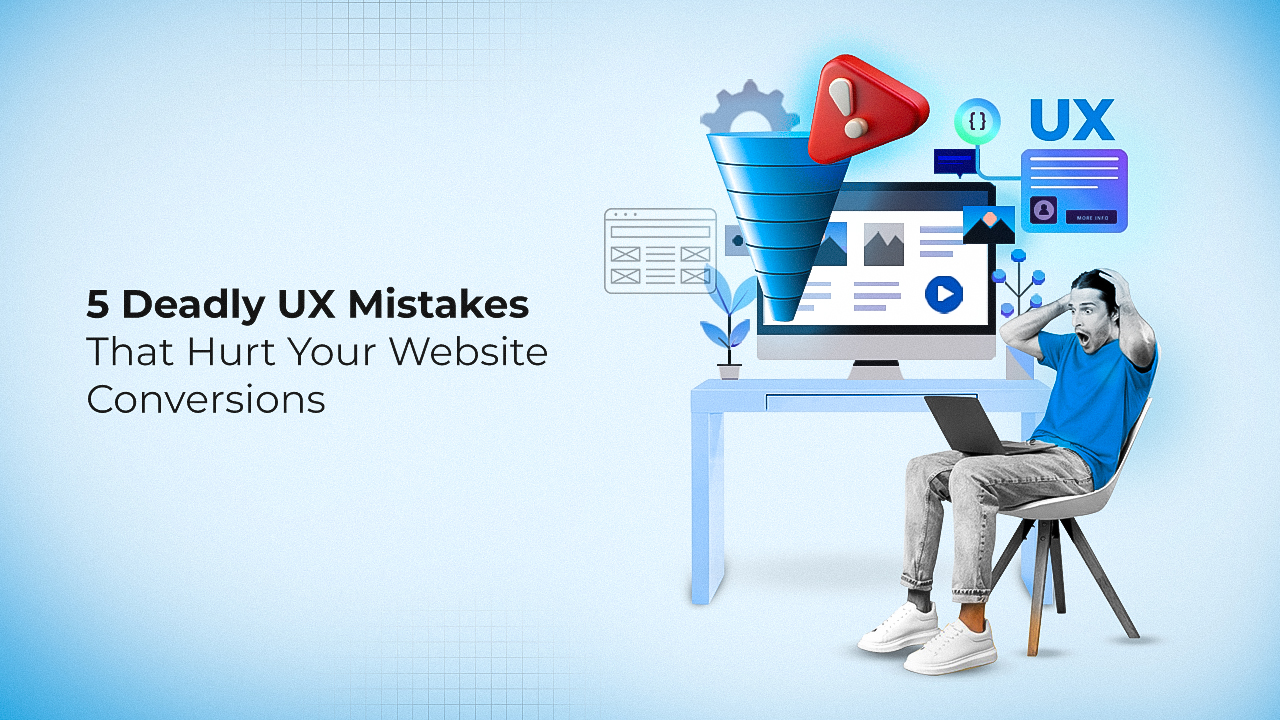
11 Hidden Ecommerce Website Development Issues That Hurt Growth
Some of the biggest blocks to ecommerce growth often stem from poor ecommerce website development itself. These problems are not visual. They live in the structure, the setup, and the planning behind the scenes. If you are not tech-savvy, you may not even realize they are there. But they do real damage, quietly limiting what your website can do.
Most e-commerce websites are built in a rush to go live, and some details are skipped in that sprint. You trusted the e-commerce website development company to get it right, and they probably delivered what was asked. The site works. It looks clean. But that does not mean it’s built for long-term results.
The goal here is to know what might be holding your store back. That way, when something goes wrong, you will have a clearer idea of where to look and what to fix.
Ecommerce website development should not be a mystery. You will be better equipped to grow your business by understanding the key issues that often get missed.
What to Expect During Ecommerce Website Development
Building an ecommerce site isn’t only about how it looks. It’s about choices. What do you want the site to actually do? How will you display products? What is the checkout going to look like? Who is buying, and how are they going to find you? These are the things you must figure out first.
If you work with an ecommerce website development company, they will usually start by asking basic things like what kind of products you sell, how orders get handled, and who your customers are. From there, they will put a plan together.
Then, they move into design, development, testing, and finally the launch. That’s the usual order. But once the site goes live, you are not done. You will spot things that don’t work as expected. That’s part of the process.
Reliable ecommerce website development services don’t build your site and walk away. They stick with you. They check whether shoppers abandon carts, if pages are being ignored, and if certain features confuse buyers. They help clean up what is unclear and fix what is not working.
If you start off knowing that ecommerce website development takes ongoing work, you will save yourself a lot of stress later. It’s not a one-time job.
11 Ecommerce Website Development Issues To Look Out For
1. Poor User Experience (UX) Design
The visitor should easily be able to locate what they are looking for and purchase it. But if the design is chaotic, if product information is hidden, or if people are unsure what to click, they will get frustrated.
Solution: A page that feels effortless to use. Navigation must be easy, product pages must be concise, and the checkout route must be clear. Good UX converts more visitors into customers.
2. Too Many Plugins or Add-Ons
Some websites are dependent on a large number of third-party tools for added functionality. While these tools can be helpful, layering them on can increase the page load speed or even cause a crash when two tools are incompatible.
Solution: A tidy, well-organized build that functions with only the tools you absolutely require. This makes your ecommerce website faster, more stable, and simpler to maintain.
3. Slow Load Times
When a website loads too slowly, people exit. They don’t linger. On top of this, search engines reward faster sites, ranking them higher, so speed also influences traffic and sales.
Solution: A website that loads quickly with pages that open fast, even on phones or slower connections. A faster site keeps more customers around and causes your store to rank higher in search.
4. Ignoring SEO Best Practices
Well-designed websites may not rank well on search engines if some fundamental SEO best practices were not considered while developing them. What is important is how your content and product pages are organized and whether search engines can crawl your site.
Solution: A website should be designed with search visibility in mind, making it easy for consumers to find your products on Google without the help of advertisements.
5. Complex Checkout Process
The more steps or forms someone has to go through to buy something, the more likely they are to leave before finishing. Small frustrations like being unable to check out as a guest or getting stuck filling out a form can negatively impact sales.
Solution: An e-commerce site’s checkout journey should be smooth, brief, and function well for any user. Shoppers will not abandon the checkout process, and a higher number will actually make a purchase.
6. No Mobile Optimization
Most customers now shop and purchase products on their mobiles. If your website doesn’t perform well on smaller screens (this can occur if buttons are difficult to tap, text is difficult to see, or pages don’t adjust correctly), you will likely miss out on many visitors.
Solution: A mobile-friendly experience where your site displays well and functions correctly on all devices, allowing people to shop anywhere easily.
7. Cluttered URL Structure
Certain sites have illogical or excessively long page links that do not make sense to humans or search engines. This can damage your reputation and make it more difficult for shoppers to visit certain pages.
Solution: Simple, clean URLs that are easy to read and recall. This enhances trust, navigation, and search visibility.
8. Weak Site Architecture
If your site’s structure is illogical, it’s difficult for users and search engines to determine what is important. Products get lost, categories are isolated, and the entire site is haphazard.
Solution: You need an organized website layout in which content is categorized logically, and users can easily find what they are looking for. This layout guides visitors effortlessly from homepage to sale.
9. No Setup for Tracking or Analytics
if you don’t use tracking tools, you will have no idea what people are doing on your site. You will not realize which pages or functionalities are causing them to abandon the store and which pages are performing well. How can improvements be carried out?
Solution: Robust tools that let you see what’s occurring on your website. You can check where traffic is coming from, how individuals behave on your site, and where sales are being lost. Accordingly, you can make smart choices based on facts.
10. Missing Security Features
Internet shoppers are security conscious. Your e-commerce website deals with private customer data. If you do not have basic protection in place, that data is exposed, putting your store and your buyers at risk.
Solution: A proper setup includes SSL for data encryption, trusted payment gateways, and basic backend protections like firewalls and two-factor login. These tools ensure that customer information stays private and your store stays safe.
11. Lack of Continuous Technical Maintenance
After a site is deployed, it continues to need attention. New software versions are released, functionality can be updated, and minor bugs can creep in over time. Without regular maintenance, your website’s performance can lag.
Solution: You need an ongoing plan for frequent updates and support. It will ensure your site operates at peak performance as your business evolves. Think of it as ongoing care that makes sure your site continues to do its job.
Choosing the Right Ecommerce Website Development Company

You are not just hiring someone to build pages. The e-commerce website development team you pick will shape how your online business performs, so pay attention to how they work.
An experienced ecommerce website development company starts by asking good questions. Not just design questions but business ones. How do your customers buy? What’s your average order value? Are you managing stock in one place or multiple? If they don’t ask about things like this, you will probably get a generic e-commerce website.
Ecommerce website development should cover a lot more than visuals. A professional team should ensure the site loads quickly, product pages are simple to use, checkout does not confuse customers, and the site appears in search engines. It also involves planning how updates will be managed when the business evolves.
Post-launch is also important. Will they be there for you after the site goes live? What if you need to add new products, modify how your cart functions, or resolve an issue that arises? A quality team will remain and assist you in making those modifications.
Miscommunication can waste time and money. You may want a one-click checkout journey for your e-commerce store, but a chaotic communication flow may result in the developers creating something else entirely.
You should work with an ecommerce website development company that takes time to explain what they are doing, listens when you explain what you want, and tells you early when something won’t work as expected. That kind of clarity makes every part of the project run smoother.
And check what kind of results they have made for other clients. They may have built a nice-looking website, but did the site help that business grow? Did traffic go up? Did conversions improve? That’s what you want to know.
The right ecommerce website development services team will act like a partner, not just a vendor. They will care about your business goals and help your website meet them.
Working with an e-commerce website development agency gives you access to more specialists—designers, developers, and SEO professionals—all working together. That can work well if your store has various special requirements.
Hire a team that understands that a website must lead to real outcomes—higher conversions, a low bounce rate, and more sales. That’s what matters.
Summing Up
The biggest problems impacting your e-commerce website’s growth usually are not visible issues. They are in the way the site was built behind the scenes (things like structure, speed, and how easy it is to use). When you know what to look out for, you are less likely to run into issues that slow you down later.
A reliable e-commerce website development company will deliver a website and also provide all the support you need. They help build something that works fast, runs well on all devices, and makes it easy for people to buy. Good e-commerce website development services give you a stable setup, so when your marketing efforts bring traffic, the site is ready to handle it.

 Ecommerce Development
Ecommerce Development 













